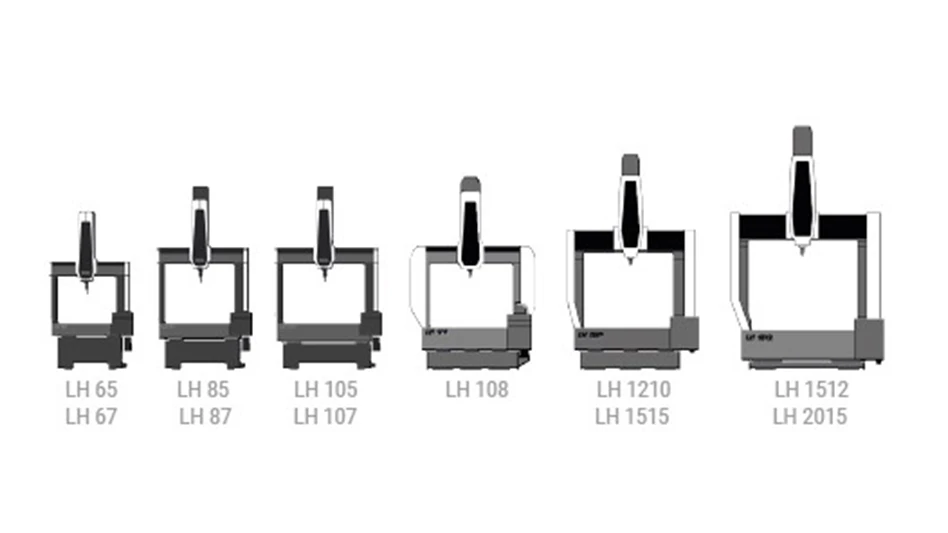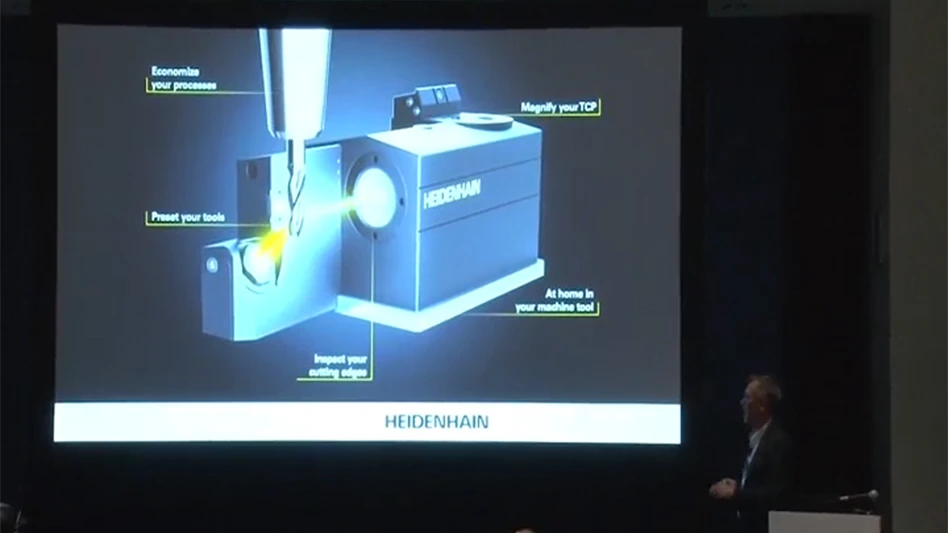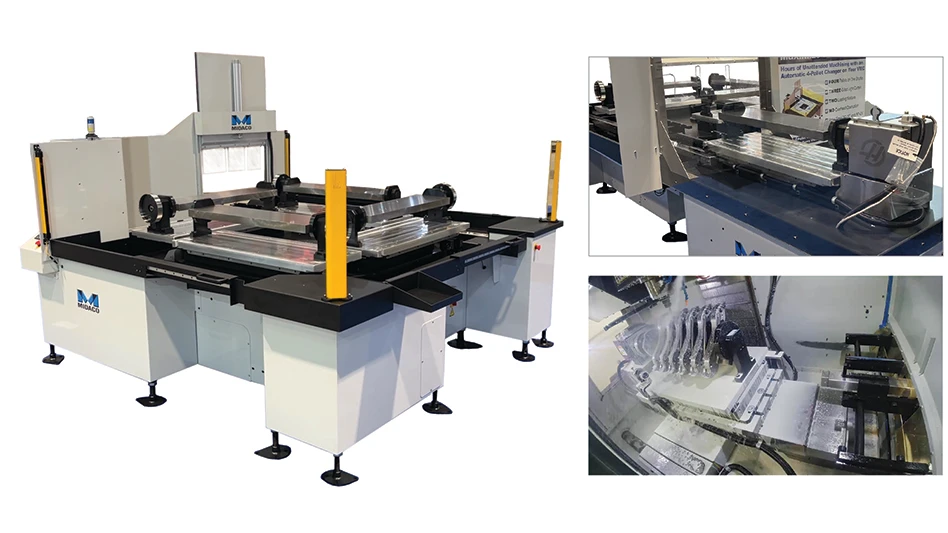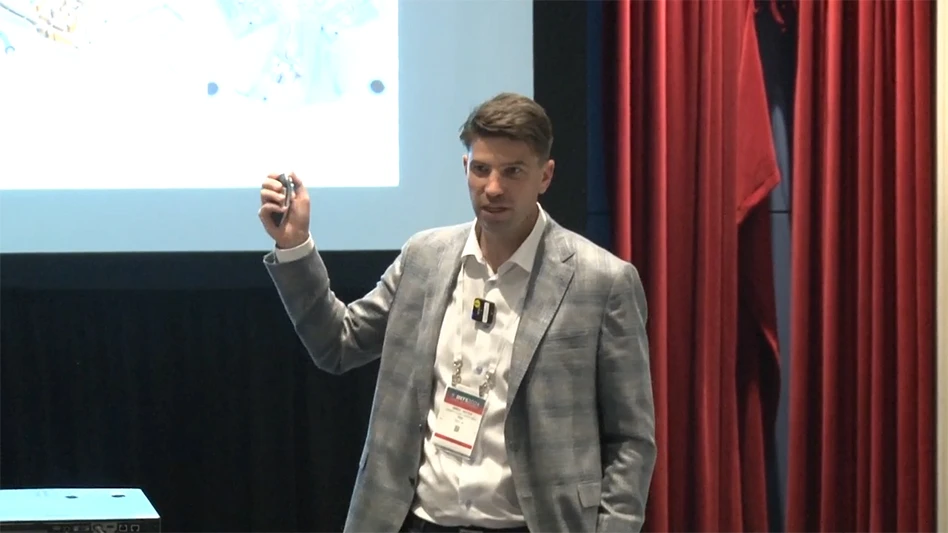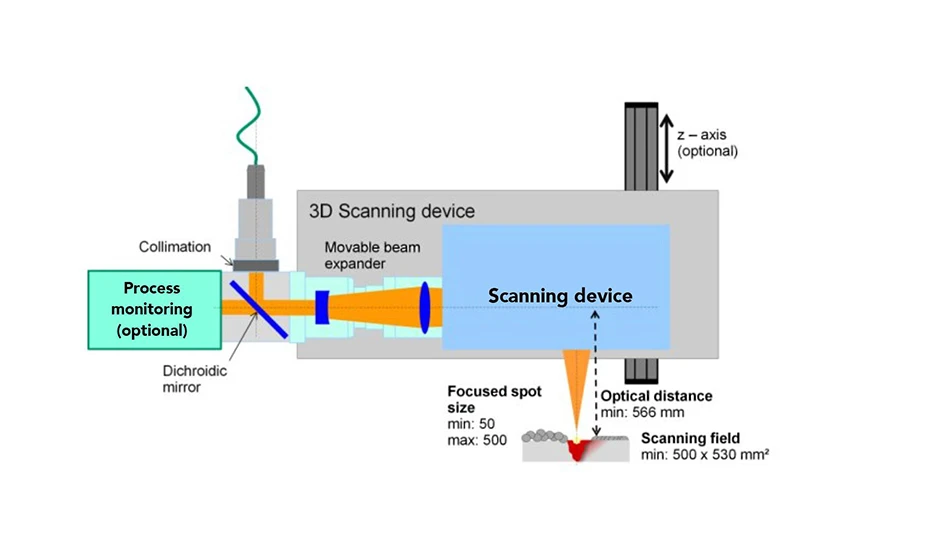
CREDIT: ACONITY3D
Compared to other production technologies, additive manufacturing (AM) is a relatively young discipline. While AM opens up many exciting new opportunities, it has not yet been fully researched in some areas and therefore also presents a variety of unique challenges.
Of the many AM techniques being developed, the 3D printing technique known as powder bed laser melting (PBLM) may be the most promising. In the PBLM process, thin layers of metal or polymer powders are melted, layer by layer, across a build surface to fuse a solid workpiece. The required energy is selectively introduced into the process zone using laser beam sources, which melts the powder in the resulting part, The build plate then descends to make way for the next layer. During the subsequent cooling process, the material hardens to form the desired workpiece.
PBLM is used in the automotive, medical and aerospace industries, among others, where it is increasingly establishing itself in series production. Compared to many traditional manufacturing methods, PBLM is far more flexible. For instance, PBLM significantly expands the geometric complexities of manufactured parts, while also increasing the variety in the choice of materials, and lowering production costs.
The challenge of stable processes
A key challenge of the PBLM process for industrial implementation is process stability. The problem with PBLM is that the manufactured part can only be checked for defects when it is unpacked from the surrounding powder material at the end of the process. If there are defects at this stage, they are generally almost impossible to rectify.
Aconity3D GmbH, based in Herzogenrath near Aachen, Germany, has established the goal of optimizing the stability of metal-based PBLM in order to further improve the quality of this technology and thus promote its use in a wider range of industries.
"Process monitoring in PBLM systems is not yet fully developed to the current state of the art,” says Lutz Lübbert, Project Manager Machine Development at Aconity3D. “In order to change this situation, we have developed a process in which the data from a high-speed machine vision system helps recording the influence of selected process parameters on parts and enables conclusions to be drawn about parameter influences.”
Aconity3D opted for the Mikrotron EoSens 3.0MCX5 3-megapixel industrial camera from SVS-Vistek along with the necessary peripherals to implement an optimized imaging system suitable for daily use. The CoaXPress interface delivers a low-latency connection to the host and stable transmission data rates up to 25 Gbit per second.
According to Lübbert, the reason for this decision was simple: “When we started researching the market for cameras with the required speed and accuracy for this application around six years ago, there were no comparable cameras available. We have never regretted our decision to use the Mikrotron EoSens 3.0MCX5 as the method developed with it has been absolutely stable since its introduction and provides an insight into the correlation of sensor data, the applied process parameters, and the resulting component properties.”
The image data provided by the Mikrotron EoSens 3.0MCX5 cameras gives the experts at Aconity3D GmbH additional insights into the PBLM process, explains Lübbert: “With these high-speed cameras, we can, for example, compare contour scans of material layers across the build process and observe the behavior of the melt pool in critical part areas. In this way, we can reliably identify defects such as melt pools breaking off or inhomogeneous surface conditions. The influence of changing laser parameters such as the modulation frequency and modulation length on the size of the melt pool can thus be recognized if all other laser parameters remain constant. The data obtained in this way can be used to expand our knowledge of PBLM processes and isolate the underlying effects.”
According to Lübbert, this knowledge, in combination with other measurement methods such as pyrometry, forms the basis for more efficient materials research in the field of 3D metal printing.

Detecting defects early on
Compared to conventional production methods, which often rely on the density of the cast semi-finished products, this inline inspection method has the potential to detect production defects at an early stage. This results in a reduced number of destructive material tests and lower manufacturing costs. In addition, reliable process monitoring with a conclusive correlation between the process parameters used and the resulting part properties is a prerequisite for closed-loop process control. Such control systems have been used for conventional laser welding processes for many years.
“In PBLM processes, however, process monitoring or even process control is still at a very early technological stage, but our developments are helping to reduce this backlog,” says Lübbert.
The main obstacle to inline process monitoring and control of PBLM processes is the transient nature of the process, which is determined by a variety of different phenomena such as melt pool turbulence, welding fume formation, spatter or other anomalies in the powder bed. These underlying disturbing phenomena increase the measurement noise, reducing the accuracy of the information obtained directly from the melt pool.
Optimistic about the future
The inline process monitoring tool developed by Aconity3D is available for almost all the company's systems, such as the entry-level system AconityMINI and the currently largest system AconityTWO with optional multi-laser setup. According to Lübbert, the target group for these systems are research institutions in Germany and abroad as well as the research departments of large companies that deal with PBLM processes.
“We believe that process monitoring using high-speed vision systems is an effective tool to learn more about the running
mechanisms and improve the quality of parts during production, rather than analyzing the finished parts for later parameter optimization. Our aim is to drive forward the development of detection algorithms that can quickly and reliably identify excessive melt pool sizes to initiate immediate countermeasures. Based on our good experience with the products we have used so far and the helpful support from our machine vision partner, including for programming issues, I also see the high-speed cameras from SVS-Vistek as essential components for our future systems.”
The Mikrotron EoSens3.0MCX5 high-speed camera used is the ideal choice for this application for several reasons, explains Karl Laderer, Area Sales Manager DACH, who is responsible for sales of Mikrotron products: “This high-speed camera uses a sensor where the region of interest (ROI) can be scaled in both the y-direction and the x-direction. The special feature of this sensor is that the frame rate can be increased by reducing the number of pixels in the x-direction. In this way, small ROIs with a high frame rate can be realized, which gives users in every field of application enormous flexibility to adapt the camera precisely to the requirements at hand.”
According to Laderer, the pixel size of 8µm x 8µm of the 3MP sensor and the fanless design are also important features that ensure reliable results when monitoring PBLM processes.
Latest from Today's Medical Developments
- Machine Solutions acquires Alpine Laser LLC
- OSG USA’s PHOENIX PFDC indexable face mill cutter & inserts
- IMTS 2024 Booth Tour: Fagor Automation Corp.
- How Robotics and Automation are Transforming Manufacturing
- Quasar Medical acquires Ridgeback Technologies
- SMW Autoblok's TMS-2G quick-change system
- IMTS 2024 Booth Tour: Marubeni Citizen-Cincom, Inc.
- Star Cutter incorporates TRU TECH brand into grinding technology portfolio
